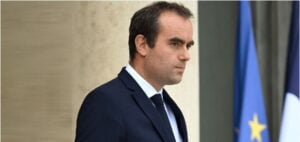Two days before the federal election, Australian opposition leader Peter Dutton has announced a $200bn (approximately €186.4bn) plan to build seven nuclear power stations by 2050. The proposal represents a clear break from the country’s nuclear energy ban, in place since 1998, despite Australia’s significant uranium reserves.
Targeting the energy strategy of Prime Minister Anthony Albanese’s Labor government, Mr Dutton seeks to end the prioritisation of renewable energy. He criticised the reliability of solar and wind power and called for a return to what he described as more stable sources, such as nuclear and gas. His plan also includes abandoning renewable energy production targets, potentially slowing existing solar and wind projects.
A project facing adverse economic assessments
The Commonwealth Scientific and Industrial Research Organisation (CSIRO), Australia’s public scientific research agency, estimated that nuclear energy would cost 50% more than current renewable solutions. According to CSIRO modelling, no plant would be operational for at least fifteen years. These timelines call into question nuclear power’s role in reducing emissions in the near term, in line with international targets.
In 2023, renewable energy accounted for 35% of Australia’s electricity generation. While the Albanese government made public commitments to green energy, it also granted new mining permits, drawing criticism over the coherence of its energy policy.
Internal divisions over energy priorities
Mr Dutton’s nuclear proposal comes as global interest in atomic energy increases. Thirty-one countries, including the United States, France and the United Kingdom, have committed to expanding nuclear capacity by 2050. In Australia, the plan has amplified divisions among institutions and stakeholders.
The Clean Energy Council, representing the renewables sector, stated that continued investment in solar, wind and battery infrastructure remains the most economically sound path. Spokesperson Chris O’Keefe noted that ageing coal power stations need replacement without waiting for the long lead times required for nuclear development.
Risk of conflict between industrial policy and social acceptance
Tensions may arise between industrial development objectives and local acceptance. Dave Sweeney, nuclear energy analyst at the Australian Conservation Foundation, warned that an abrupt shift in strategy would cause “economic dislocation and disruption”. He highlighted risks to existing industries and active energy investments.
Conversely, Kirsty Braybon, nuclear law specialist and member of Nuclear for Australia, argued that the current ban no longer reflects technological progress. She said maintaining the ban hinders innovation, employment, and competitiveness. According to her, lifting legal restrictions would allow Australia to align with other nations expanding their civil nuclear programmes.






















